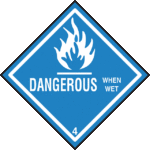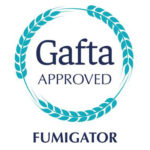 The Department of Transportation (DOT) Special Permit DOT-SP 11329, first granted to Degesch America, Inc. in 2005 was scheduled to expire on April 30, 2019. Degesch America, Inc. applied for the renewal of the Special Permit in January, and we are pleased to report, the application has been approved. Under the terms of the Special Permit, operators transporting our products, Phostoxin®, Magtoxin®, Fumitoxin® and Detiaphos® are exempt from specific DOT regulations under certain conditions.
The Department of Transportation (DOT) Special Permit DOT-SP 11329, first granted to Degesch America, Inc. in 2005 was scheduled to expire on April 30, 2019. Degesch America, Inc. applied for the renewal of the Special Permit in January, and we are pleased to report, the application has been approved. Under the terms of the Special Permit, operators transporting our products, Phostoxin®, Magtoxin®, Fumitoxin® and Detiaphos® are exempt from specific DOT regulations under certain conditions.
Operators who meet the requirements of the Special Permit are not required to are not required to affix Hazardous Material placards to their vehicle or possess a Commercial Drivers License to transport less than 21 kg of properly marked products.
The Special Permit can be viewed here: DOT-SP 11329
 Gafta (The Grain and Feed Trade Association) is the international Association representing the trade and supply of agricultural commodities, animal feed materials, pulses, rice, spices and general produce worldwide. The Gafta Standard is an independently audited scheme designed to maintain and improve the level of competence of activities related to the trade of agricultural commodities, animal feed materials, pulses, rice, spices and general produce worldwide.
Gafta (The Grain and Feed Trade Association) is the international Association representing the trade and supply of agricultural commodities, animal feed materials, pulses, rice, spices and general produce worldwide. The Gafta Standard is an independently audited scheme designed to maintain and improve the level of competence of activities related to the trade of agricultural commodities, animal feed materials, pulses, rice, spices and general produce worldwide.